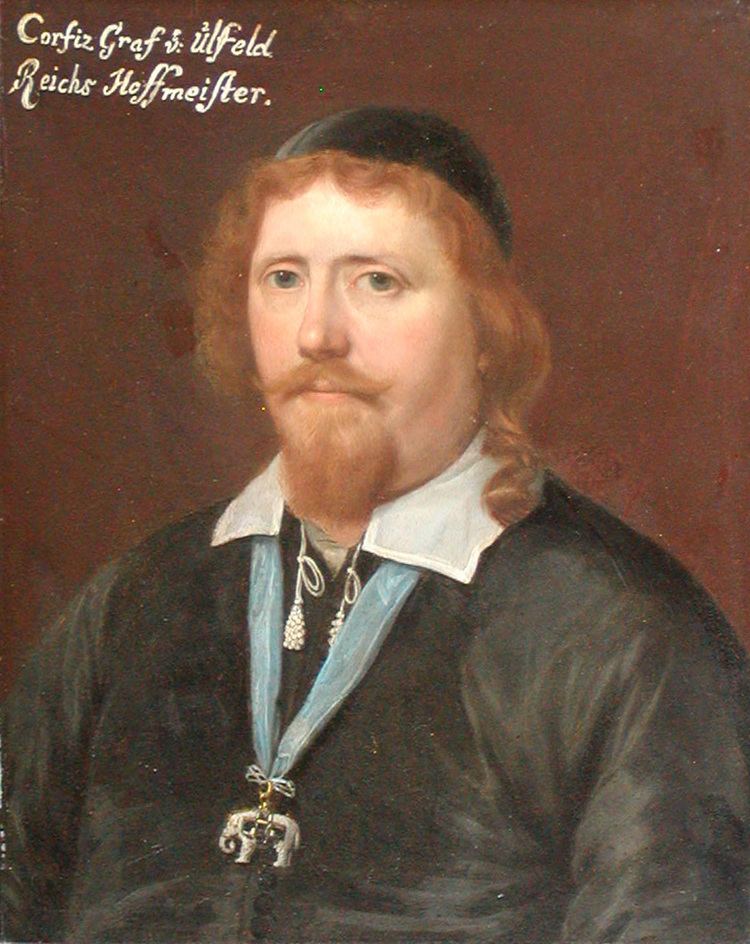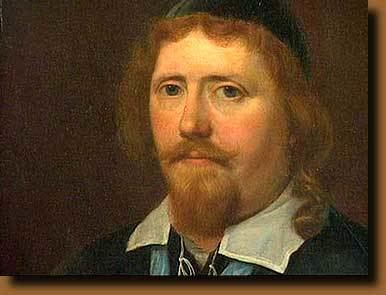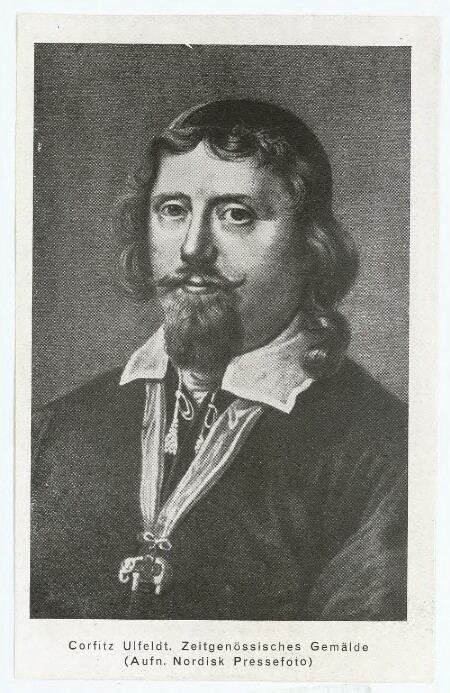Parents Jacob Ulfeldt | Name Corfitz Ulfeldt Mother Birgitte Brockenhuus | |
 | ||
Issue Count Christian UlfeldtCountess Anna Katrine UlfeldtCount Jakob UlfeldtCountess Ellen UlfeldtCount Ludwig UlfeldtCount Corfitz UlfeldtCount Leo Belgicus UlfeldtCountess Leonora Sophie UlfeldtCount Otto UlfeldtCount Leo Ulfeldt Children Leo Ulfeldt, Ludwig Ulfeldt, Jakob Ulfeldt Similar People Leonora Christina Ulfeldt, Kirsten Munk, Christian IV of Denmark | ||
Grandchildren Anton Corfiz Ulfeldt | ||
Count Corfits Ulfeldt (10 July 1606 – 20 February 1664), Danish statesman, was the son of the chancellor Jacob Ulfeldt. After a careful education abroad, concluding with one year under Cesare Cremonini at Padua, he returned to Denmark in 1629 and quickly won the favor of King Christian IV. In 1634 he was made a Knight of the Order of the Elephant, in 1636 became Councillor of State, in 1637 Governor of Copenhagen, and in 1643 Steward of the Realm.
Contents

He is commonly known and recognized as the most notorious traitor in Danish history.

Rise to power

In 1637 Ulfeldt married the king's daughter Leonora Christina, who had been betrothed to him from her ninth year. Ulfeldt was the most striking personality at the Danish court in all superficial accomplishments, but his character was marked by ambition, avarice and absolute lack of honor or conscience. He was largely responsible for the disasters of the Swedish war of 1643-45, and when the Treaty of Brömsebro was signed there was a violent scene between him and the King, though Ulfeldt's resignation was not accepted.

In December 1646 he was sent as ambassador extraordinary to the Hague, but the results of his embassy by no means corresponded to its costliness, and when he returned to Denmark in July 1647 he found the king profoundly irritated. Ulfeldt, supported by the Rigsråd and the nobility, who objected to Christian's fiscal policy, resisted his father-in-law, and triumphed completely. As Steward of the Realm he was the virtual ruler of Denmark during the two months which elapsed between the death of Christian IV and the election of Frederick III (6 July 1648); but the new king was by no means disposed to tolerate the outrageous usurpations of Ulfeldt and his wife, and this antagonism was still further complicated by allegations of a plot (ultimately proved to be false, but believed at the time to be true) on the part of Dina Vinhofvers, a former mistress of Ulfeldt, to poison the royal family. Dina was convicted of perjury and executed, but Ulfeldt no longer felt secure at Copenhagen, and on the day after the execution he secretly left Denmark (14 July 1651) with his family.
Treason
After living for a time in concealment at Amsterdam, Ulfeldt moved to Stralsund in Swedish Pomerania. Charles X of Sweden invaded Denmark: in July 1657 Ulfeldt responded to the King's invitation to enter his service. Sweden was Denmark's deadliest foe. Ulfeldt's purpose was twofold: humiliate his monarch and secure a personal fortune. He persuaded the commandant of Nakskov (a strategically crucial fortress) to surrender to Charles X, and did his best to convince his countrymen that resistance was useless. He even loaned the Swedish king a fortune to finance the war with money that, it is believed, was embezzled from the Danish state. Finally, as one of the Swedish negotiators at the Treaty of Taastrup, he was instrumental in assuring the humiliation of his native land.
Ulfeldt's treason was rewarded by Charles X of Sweden with ennoblement as the Count of Sölvesborg in Blekinge; however a discontented Ulfeldt instead began intriguing against his new master. He was soon discovered, and in May 1659 was sentenced to death. On 7 July the Swedish regents amnestied him, and he returned to Copenhagen to try to make his peace with his lawful sovereign, who promptly imprisoned him and his wife. In the summer of 1660 they were conveyed to Hammershus in Bornholm, as prisoners of state.
Later life
Their captivity was severe to brutal and they were released in September 1661 in the most degrading conditions. The fallen magnate henceforth dreamed of nothing but revenge, and in the course of 1662, during his residence at Bruges, he offered the Danish crown to the Frederick William I, Elector of Brandenburg, proposing to raise a rebellion in Denmark for that purpose. Frederick William betrayed Ulfeldt's treason to Frederick III, and the Danish government at once impeached the traitor; on 24 July 1663 he and his children were degraded, his property was confiscated, and he was condemned to be beheaded and quartered.
He escaped from the country, but the sentence was actually carried out on his effigy; and a pillory was erected on the ruins of his mansion at Copenhagen. During a new flight he died February 1664 in a boat on the Rhine not far from Basel. The circumstances of his death or his final resting place are not known.
Legacy
To posterity Corfits Ulfeldt has stood as the prototype of a traitor in Danish history. In addition, modern historians have been liable to view him as a mentally highly unstable man whose lust for power ended in megalomania and insanity. In contrast his wife Leonora Christina has been admired because of her long time as a prisoner after his death.
